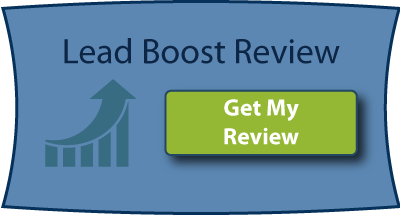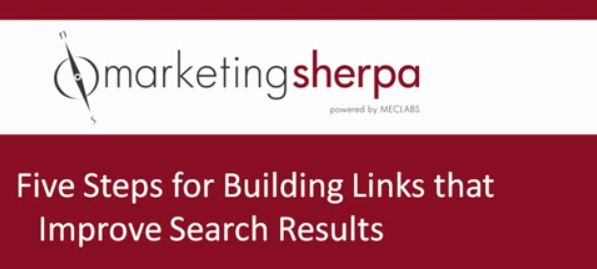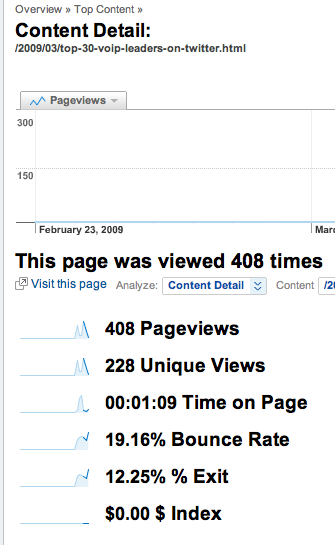Have you noticed?
Doing business online has changed drastically in the last several years. With the growth of social media, search engines, and the information available online, buyers have become much smarter about why and how they spend their money.
They don’t want to be sold to anymore.

Many businesses have relied on commercials, print ads, tradeshows, and cold calls. Unfortunately these methods get less and less effective every year.
People have the power to research everything about a product or service before they buy it. They don’t want to hear sales pitches anymore. This changes the lead generation landscape:
How do you get qualified leads if prospects aren’t receptive to traditional marketing?
The answer is Inbound Marketing -- a marketing methodology based on providing value to customers first before presenting your products and services. It’s the best way to attract qualified leads online, and you’re about to learn how to do it.
Are you ready? Then let’s get started.
Step 1. Get to Know Your Ideal Customer
To market effectively, you have to know the prospects you’re targeting. This means gaining intimate knowledge of your audience’s personality and professional ideals.
Here are a few things you want to nail down:
-
Their goals. What are they aiming for? What are they trying to achieve?
-
Their biggest challenges. What’s stopping them from reaching those goals? (And how can your products/services help them?)
-
Their strongest pain points. What do they complain about the most? Which issues would they love to have disappear?
-
Common objections to your products/services. What is stopping them from pulling out their wallets?
Discovering this information involves diligent research. There are two types of research that you want to conduct: passive research and active research.
Passive Research
To conduct passive research, you want to dive into online hubs where your target audience hangs out. This is where they discuss their wants, needs, desires, and challenges -- the exact information you’re looking for.
Find forums related to your ideal customers. Head over to Quora and other Q&A sites. Hop on Twitter and search for conversations your prospects are having. Join Google+ communities and Facebook/LinkedIn groups.
In each of those online hubs, read through the conversations that are going on. Then jot down these three pieces of information: their goals, challenges, and pain points.
This information is marketing gold that will make your prospecting much more effective.
Active Research
Active research involves communicating with your target audience directly. You ask them insightful, open ended questions to find out all four pieces of information (especially common objections to your products and services).
Here are some methods to try:
-
Send a survey to your email list.
-
Respond to comments on your blog and ask people questions.
-
Create a promotional deal for your products and services. Afterwards, contact the people who didn’t buy and ask them why they decided not to. (This will uncover common objections.)
-
Contact people directly on social media and ask them if they wouldn’t mind giving their opinion on your product, service, blog post, etc.
Strategies like these will uncover your audience’s strongest pain points AND help prospects create a stronger bond with your brand.
Using all of this knowledge, you can create buyer personas that will permeate all of your marketing materials and lead generation.
For an example of a buyer persona and a complete guide to create your Precise Prospect Profile, download our kit.

Step 2. Create Content That Attracts Prospects
Too many marketers create content without thinking about their ideal prospects. They come up with articles ideas, write those articles, and publish them without considering which people they’re trying to attract.
But you won’t make this mistake. Why? Because in Step 1, you just gathered all of the information you need. By creating content that solves the same problems your prospects are having, you will naturally attract these people to your business.
All of your content ideas should be based around the goals, challenges, pain points, and common objections you found in the previous step.
However, you also need to base your content around your own products and services. Here’s the catch: your content should solve the same types of problems your products and services solve.
This is how you attract qualified prospects who are predisposed to want and need what you offer. If you help them fix the same types of issues your products/services do, these prospects begin to trust your authority in the space.
They trust that if your free content can help them solve this problem, your paid products and services will solve an even bigger problem they’re having.
Now you know how to create the right content, but how do you get it in front of your ideal customers?
This involves cunning content distribution.
Step 3. Distribute Your Content and Make Your Business Visible
It’s not enough to create content that’s targeted to your prospects. Not even close.
They won’t visit your website unless you distribute it in channels where they hang out. I mean, how else would they find it?
Distributing content the right way makes you visible on the internet. It makes it easy for your ideal customers to find you.
Your qualified leads are searching for solutions to their problems RIGHT NOW. These are solutions that your content, products, and services can solve. The #1 issue: they just can’t find you.
Yet.
Here are four types of distribution you should take advantage of:
-
Social networks
-
Forums
-
Search engines
-
The Inbound-Out style of outreach
Social Networks
At the very least, you should share your content on each social account you have. This is the bare minimum to make yourself visible on the internet.
However, you should be doing much more than that. You should be reaching out to influential people in your space who have large followings and present your content to them. Odds are, if they like it, they will share it with their audience.
You should be reaching out to those same prospects you found on social networks in Step 1 and present your content as a great place to get more information.
You should head over to the Google+ communities and Facebook/LinkedIn groups and share your content with those people (because you’ve already qualified them to want and need it).
Social media marketing methods like these tap into the true viral power of social media and the benefits it can bring to your business.
Forums
Forums can be packed with your target audience. They exist to bring people with similar interests together to discuss those interests and help each other out.
They want to find and share amazing content with the community. Your content can elevate the community. All you have to do is share it there.
Here are three ways to do this:
-
Create a thread that introduces your content. Then, link to your content at the end if they want to read more.
-
Create a thread describing the main ideas of your content, and link to your content at the end if they want to learn more.
-
Link to your content in the signature, then become active on the forum by answering questions and helping people.
Your content acts as the lure, but you have to cast the rod for it to attract people to your website.
Search Engines
Search engine optimization -- the process of creating assets that search engines like and want to rank on the first of their results.
This process still eludes many people, but it’s some of the highest quality traffic you can get. Where else are people naturally turning to again and again to solve the problems they suffer from most?
Here is a general process you can follow:
-
Base each piece of content you create around a keyword with a high search volume.
-
Scour the internet for link building opportunities. “Links” pages and weekly roundups are two of the best backlink sources.
-
Reach out to the site owner and present your content as a nice addition to the page.
If your content is of high enough value (relative to the content already ranking for that keyword), and if you can build a solid amount of authoritative links, you give your content the best chance to rank on the first page.
Once it ranks, you get to reap the benefits of long-term, qualified traffic for as long as your content remains there.
The Inbound-Out Style of Content Distribution
Inbound-Out Marketing is a new marketing philosophy that involves active prospecting and outreach. It takes the best parts of sales and incorporates it into effective inbound marketing.
To distribute your content this way, you actively reach out to prospects. You establish micro-rapport by communicating with them directly, and you get in contact by phone and through personal emails.
Then, you present your content to them. This is where they can get more information if they need it, which will eventually expose them to your products and services.
Steps 1-3 will help you drive qualified traffic to your website because this process is based on helping people with the same types of issues that your products and services do.
However, these prospects might be qualified, but they’re not leads yet.
That’s where Step 4 comes in.
Step 4. Convert Qualified Traffic Into Qualified Leads
Your site must be optimized to capture the traffic that’s coming in. These people may have a need for your products and services, but they’re not convinced quite yet. They’re still wondering if you’re the one to choose.
To convince them, you need to be able to establish long-term communication. You need their contact information.
This involves incorporating 4 crucial elements into your website:
-
Lead magnets
-
Sign-up forms
-
Clear calls-to-action
-
Landing pages
Lead Magnets
Lead magnets are downloadable freebies that you give away in exchange for contact information. They typically come in the form of ebooks, but they can be checklists, free trials, mindmaps, spreadsheets -- anything that a prospect would find valuable.
These need to be sprinkled around your website to entice visitors to give up their contact information, join your sales funnel, and convert into leads.
But how do you facilitate this exchange?
You do it through sign-up forms.
Sign-up Forms
Sign-up forms are the gateways to your sales funnel. They facilitate the exchange between your lead magnet and a prospect’s contact information.
You need at least one of these for each lead magnet you give away.
Clear Calls-To-Action
A call-to-action lets a prospect know exactly what you want them to do and when you want them to do it.
“Sign Up Now For Immediate Access”
“Buy Now!”
“Download Instantly!”
These calls-to-action come at the end of each sign-up form. They let the prospect know that once their information is filled out, they must click this button in order to finalize it.
Landing Pages
Landing pages are the final piece of the conversion puzzle. They combine lead magnets, sign-up forms, and calls-to-action in one highly-optimized location.
These pages have one job: convert the traffic you’re generating into leads. Make sure your landing pages are easily accessible from every page of your website.
In Closing
Inbound Marketing is the best way to sell without selling. It leaves your prospect's lives uninterrupted by pushy sales pitches and ads. It allows them to slowly but surely build trust in your business.
By following this process, you become an asset to your prospects lives, rather than a burden. Not only that, but you attract high quality, qualified leads at the same time, which grow your business as well.
Takeaways
Follow this process to consistently generate qualified leads:
-
Do in-depth research on your ideal customer.
-
Create content that solves 1) the same problems your prospects are having and 2) the same types of problems your products/services solve.
-
Distribute your content in multiple channels and use various outreach methods.
-
Optimize your website to capture leads with lead magnets, sign-up forms, calls-to-action, and landing pages.










 If you’re happy with the amount of traffic your site is receiving but not with the number of visitors that are being converted into customers, you’re probably wondering where you should focus your time and resources. Since you want your site to generate more sign-ups or purchases, the best thing you can do is add more landing pages. If you already have a main landing page, you’re probably wondering why you need more.
If you’re happy with the amount of traffic your site is receiving but not with the number of visitors that are being converted into customers, you’re probably wondering where you should focus your time and resources. Since you want your site to generate more sign-ups or purchases, the best thing you can do is add more landing pages. If you already have a main landing page, you’re probably wondering why you need more.
